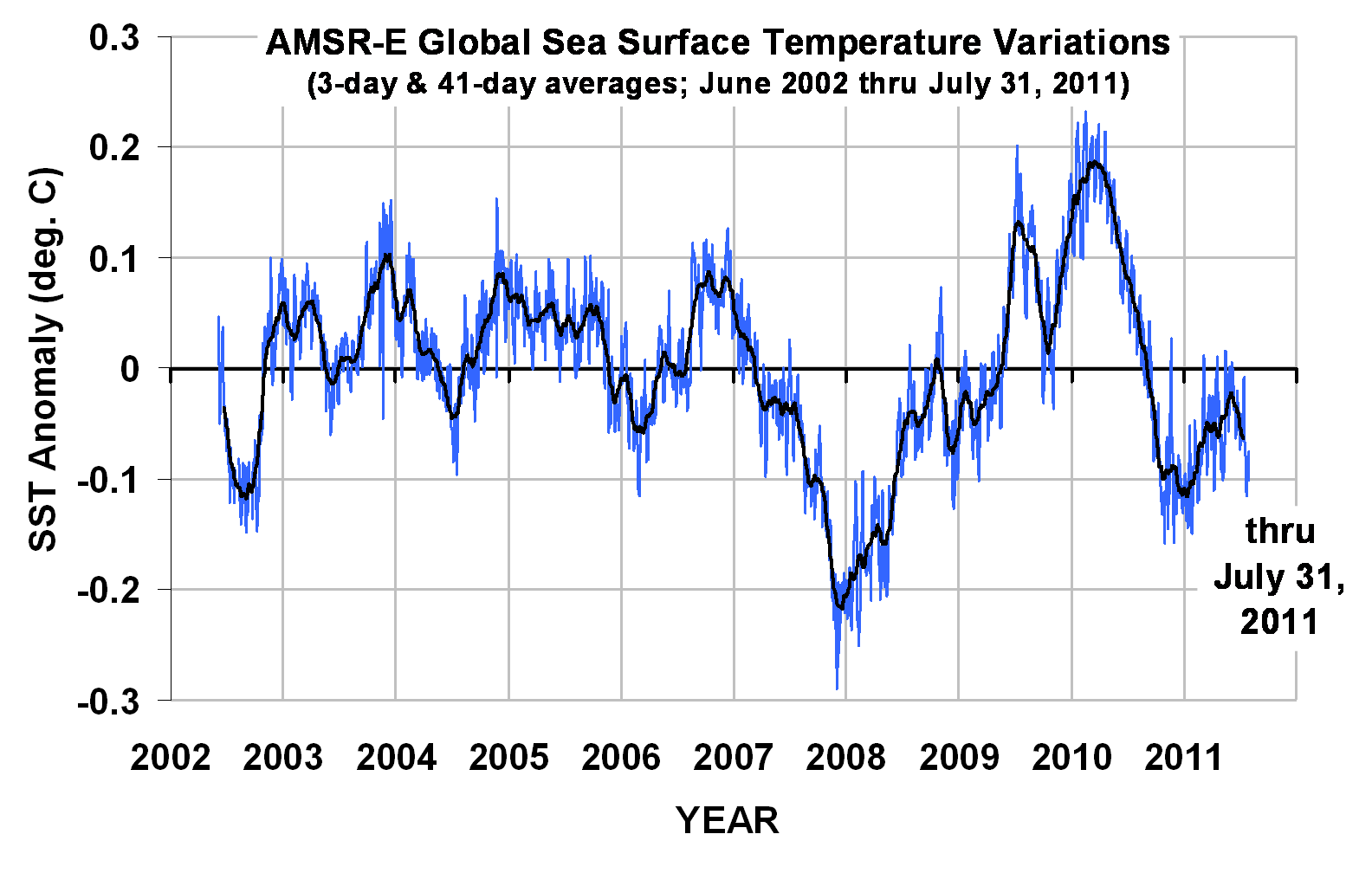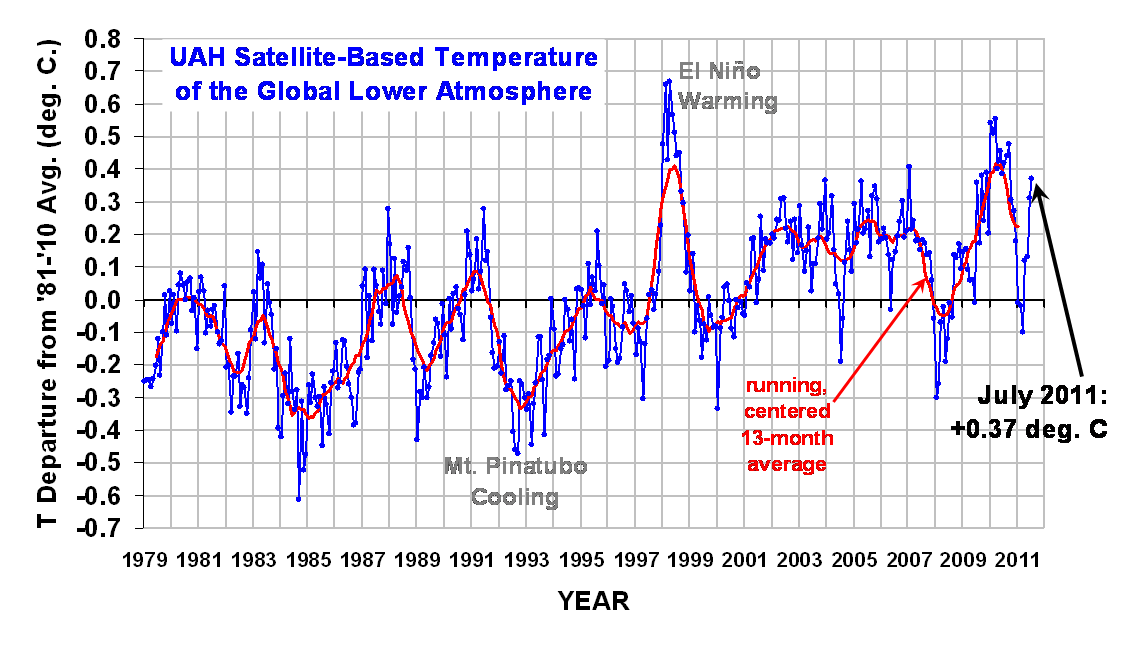How ironic..a “global warming denier” reporting on warmer temperatures 😉
The global average lower tropospheric temperature anomaly for July, 2011 increased to +0.37 deg. C (click on the image for a LARGE version):
Even though the Northern Hemisphere temperature anomaly cooled slightly in July, as did the tropics, warming in the Southern Hemisphere more than made up for it:
YR MON GLOBAL NH SH TROPICS
2011 1 -0.010 -0.055 +0.036 -0.372
2011 2 -0.020 -0.042 +0.002 -0.348
2011 3 -0.101 -0.073 -0.128 -0.342
2011 4 +0.117 +0.195 +0.039 -0.229
2011 5 +0.133 +0.145 +0.121 -0.043
2011 6 +0.315 +0.379 +0.250 +0.233
2011 7 +0.372 +0.340 +0.404 +0.198
For those who want to infer great meaning from large month-to-month temperature changes, I remind them that much of this activity is due to natural variations in the rate at which the ocean loses heat to the atmosphere. Evidence for this is seen at the end of the sea surface temperature record through last month, which has a down-tick during the recent up-tick in atmospheric temperatures:
Global Sea Surface Temperature through July:
Here are the SST anomalies from AMSR-E on the NASA Aqua satellite (note the different base period, since Aqua has been flying only since 2002…click for a larger version):


 Home/Blog
Home/Blog




